In 1973, the year of the Minolta XM’s launch, Minolta had been serving the consumer market very successfully for several years with the SR-T. There, it was a hard-to-beat queen. In total, about 3.6 million cameras of the SR-T series were sold. The SR-T was a cash cow for Minolta. Despite different versions and further developments, it was basically always the same camera. virtues of extreme robustness, high reliability and simple operation, were important to millions of photographers. No matter what the condition, an SR-T can almost always be triggered, and reliably. It and the outstanding Rokkor lenses were the basis for the success of the Minolta brand, which lasted for a good three decades. Why did Minolta dare to take the risk of entering the pro camp with the XM in 1973?
To understand this, a look at the market for professional cameras at that time helps. With the legendary F, Nikon had built this market into an impregnable fortress within a decade.
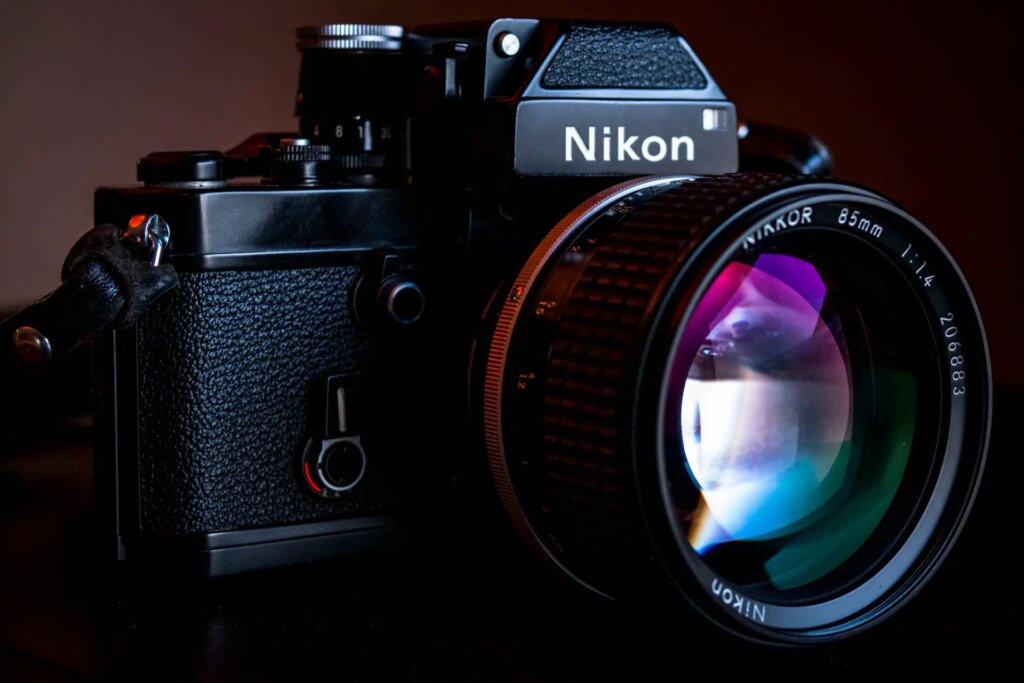
Nikon’s international rise began in the 1950s when David Duncan, Bob Capa and other war photographers got to know and appreciate the fast and optically outstanding Nikon lenses and viewfinder cameras during their missions in Asia. More and more professionals became convinced of these qualities. Within a few years Nikon outstripped the German camera giants Zeiss Ikon, Leica and Rollei in the important North American market. When the F was launched in 1959, the system also won over professional photographers in Europe. No sporting event, no press conference, no tabloid, no reportage without pictures taken with the Nikon F. It became the epitome of professional photography. It became the epitome of the professional camera and thus a well-known myth.
The Nikon F2 continued this dominance from September 1971. However, Canon had introduced a professional camera a year earlier, which they confidently called the F-1. This was an affront to Nikon, since there was only one F. The F-1 was a completely new development. With this modern camera and high-quality lenses, Canon wanted to gain a foothold in the professional market. Nikon certainly felt pressure to develop further. The firm foundation for the F2 was the F. Thus, one can speak of it as more of an evolution. Nikon did not want to scare away the conservative clientele of professional photographers. A correct strategy, because they quickly made friends with the F2, which was just as reliable and robust. It also brought some functional and handling improvements. Improved motor drive, mirror lock-up, hinged and interchangeable backs, and exposure times from 1/2000 s to 10 s. The fact that the F’s focusing screens and lenses could still be used was a clever move. Nikon had done everything right! The F2 is often called the best mechanical camera ever built.
Nikon kept its grip on the prestigious clientele.
The prestige pressure that Nikon had built up with the F and the F2 was also felt by Minolta. It was more a response to the Nikon F and the Canon F-1 than to the F2. When the F2 came out, the development of the Minolta XM was already finished. No one at Minolta expected it to outpace Nikon in the professional market. Rather, Minolta wanted to take over the technological supremacy. New standards for a professional camera were to be set to attract the attention of progressive photo professionals. The innovations developed for the XM would benefit the X series for years to come. This also convinced Leitz, and so the cooperation with Minolta was born to realize the connection to the SLR market for Leica.
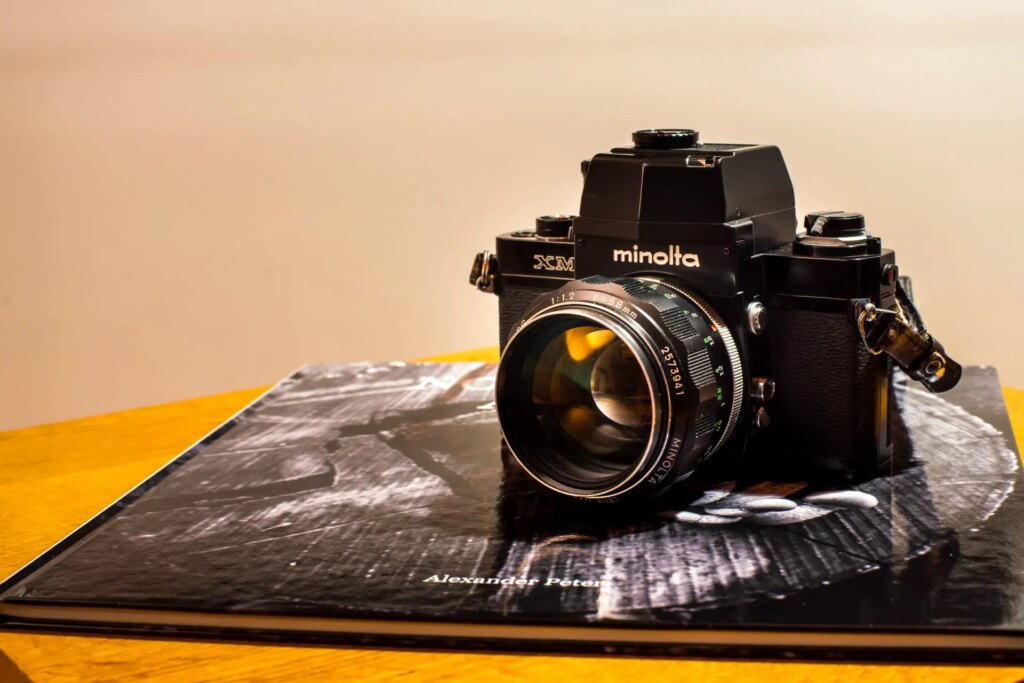
The Minolta XM was extremely advanced in its day: aperture priority, electronically controlled speeds with a huge range of choice, a sophisticated interchangeable viewfinder system, and the controversial sensor switch on the right front to turn on the metering system (I love it!).
The appreciation of the profile camp remained denied to the XM. A meager 51,000 units were produced. It would have deserved it. However, the conservative profile camp could not be convinced by the innovations that were supposed to make the work faster and better.
After all, it was built until 1980.
How do the Minolta XM and F2 fare in today’s use?
To compare such giants of 35mm photography with each other, and even in this day and age? Isn’t that a bit arrogant? I’ve asked myself questions like that, because I don’t want to mess it up.
But somehow the thought of a comparison didn’t let me go. Therefore, all concerns were thrown overboard.
Of course, I am not a professional photographer who can compare in the hard journalistic everyday life. Nevertheless, I think a comparison of these two icons is interesting even in today’s world. And, of course, I can only report on my experiences with my cameras here.
To begin with, some important hard facts about the two bolides:
Nikon F2:
Introduced: September 1971
Manual shutter and aperture selection
100% field coverage through viewfinder
Mechanical shutter speeds: B – 1/2.000
Film advance: At 20 degrees of metering readiness. One or more sweeps 120 degrees
Weight / Dimension: 1,167 gr. with the Nikkor 50mm 1:1.4; without lens 846 gr. Nikkor 50 mm 1:1.4 Obj. 315
With photomics viewfinder (F2A) and 1.4/50mm lens: 152 x 98 x 56 mm.
Special features:
- Titanium shutter
- Point on release button for rewinding
- Film holder
- Self-timer with timer
- Nikon robustness
- Metering readiness through film transport lever
- Exposure meter on viewfinder head
- Self-timer on T-position = long time exposure, when setting the self-timer with time pre-setting
- Huge range of accessories (2 motor drives, 3 special viewfinders, 19 viewfinder screens, giant magazines for up to 750 images, various diopter viewfinder lenses, etc.)
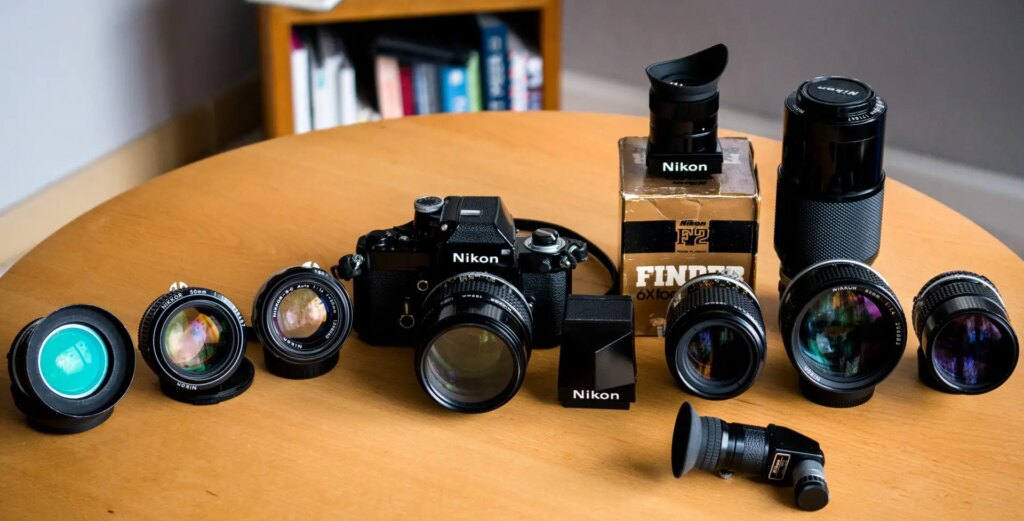
Minolta XM:
Introduced at Photokina in 1972 Shipped in 1973
Aperture-priority automatic (with automatic prism viewfinder) / manual
Exposure metering according to CLC principle
98% field coverage through viewfinder
Electronically controlled times from 16 s – 1/2,000
Film transport: One or more swings 110 degrees
Weight / Dimension: 1,384 gr. With the Rokkor 1.2/58mm, without lens. 903 gr. Obj. 482 /
With automatic prism viewfinder and lens 1.2/58mm: 147.5 X 109.5 X 97 mm.
Special feature:
- Automatic manual switch to turn on metering and auto exposure on the front panel.
- Titanium shutter for approx. 200,000 releases
- Differential bearing and degressive acceleration and pneumatic shock absorbers for smooth mirror movement
- Advanced CLC: Automatic contrast compensation – Four light-sensitive systems (directional / diffuse / sensitivity ratio approx. 1:10) provide different electrical signals depending on the image composition and contrast which are processed according to purpose.
- Mechanical release at X (1/100) and B
- Working iris/mirror flaps by locking button
- Stepless override function
- No connection possibility winder/motor
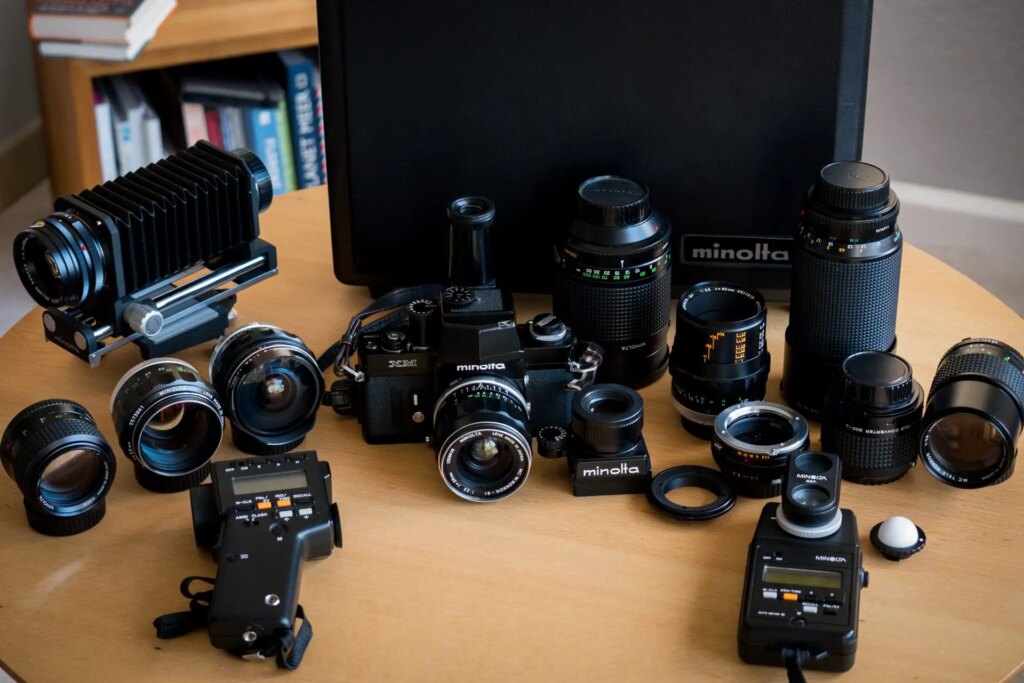
From today’s perspective, these two are perfect, free-spirited and elegant old-timers. Each has its own charm and both are more than adequate in 99% of all my photographic challenges.
However, they definitely have different characters.
Externally, the Minolta XM looks like it’s straight out of Gotham City with its distinctive, tall and wide-angled automatic prism viewfinder. The dark knight sends his regards. It is clearly beefier than the F2. This is also noticeable when it is held in the hand. With the Rokkor 1.2/58mm brand “glass brick”, the Batman Minolta weighs a whopping 1,384 grams without the lens, still around 900 grams.
The F2 therefore doesn’t seem dainty and comes to the Nikkor-auto 50mm also with 1,167 gr. clearly over the 1,000 gram mark. Without the lens, the distance to the Minolta XM is only about 50 grams. The Nikon appears more puristic. Without automatic and purely mechanical, the batteries are only needed for the Photomic viewfinder’s light meter.
With the Minolta XM, on the other hand, with the choice between aperture priority and manual settings and an electronic shutter, the batteries are irreplaceable for functionality. When the battery is exhausted,The mirror folds down again when the battery compartment lock is released. The flash sync time can then be used with the emergency program, which triggers the camera mechanically at 1/100 sec.
All in all, the Minolta XM’s operation is more complex and offers solutions that were very innovative at the time and are still convincing today. It has one feature that irritated users. So much so, that many had it shut down by Minolta service. Even Josef Scheibel recommends in his Minolta Book II to use it only in special cases. I am talking about the then much discussed automatic hand switch on the front of the Minolta. I personally experience the use of the switch as extremely useful and super comfortable. The actual exposure switch stays on “off”, while the hand switch turns on the light meter. Power is only consumed when it is needed! Provided it is photographed with the aperture priority. Because if I don’t need to use the timer dial, I can comfortably keep my hand on the camera and operate the switch. I am sure that the Minolta engineers had this usage in mind when they designed the manual switch. In pure manual mode, it takes some dexterity to continue using the switch while adjusting the shutter speed dial. However, there is also a serious disadvantage of the switch that should not be ignored. If you forget to press it or let it go before shooting, the XM gets no power. Then the shutter opens with the slowest shutter speed of 16 seconds. During this time, the camera is locked. If the environment is very bright, light can ruin the image edges on the right and left. In this case, the film carrier acts as a light guide. Often the shutter gets stuck completely and you have to open and close the battery cover to release it. At a time when people were used to pushing buttons hard, this was perhaps one reason that the hand switch, more push button than switch, caused confusion and displeasure. The idea of the switch, however, lived on at Minolta in the touch-sensitive grips of the AF SLR and bridge cameras.
With the Nikon F2, on the other hand, the operation is clear from the start. Fold down the transport lever to activate the exposure meter, align the time and aperture with the needle in the viewfinder, and pull the trigger. That’s it! However, there are settings that are not quite as elegantly solved as on the XM. The Nikon’s externally readable light meter is a nice idea for those who want to shoot “from the hip.” It’s tiny but still easy to see. Unfortunately, the exposure times are not readable from the top and are hidden under the ASA setting.
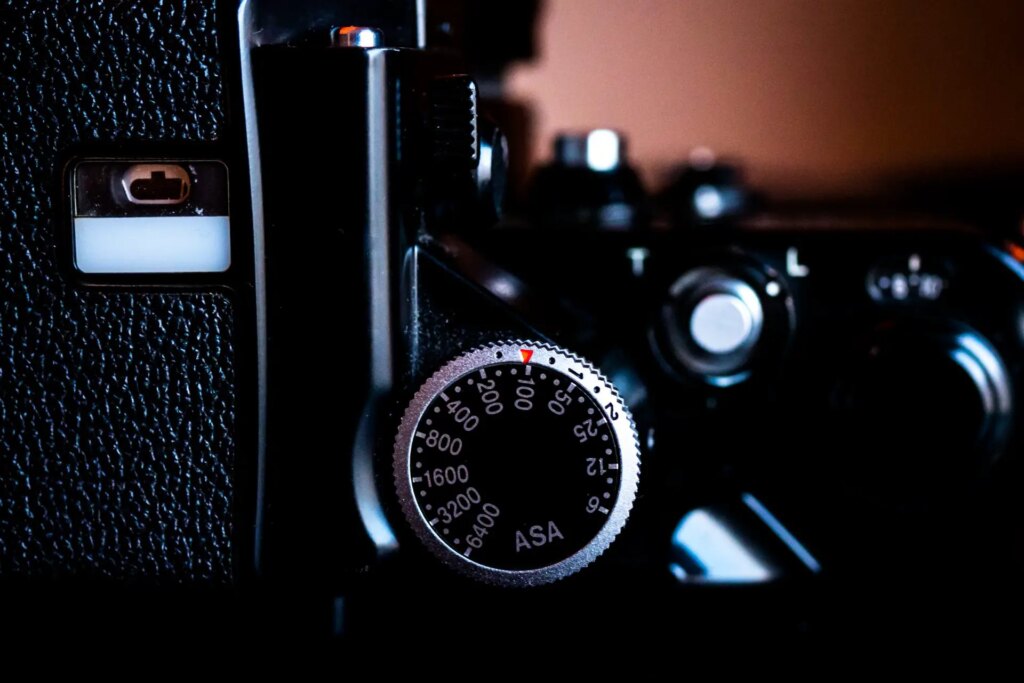
A great feature of the Minolta XM is the long exposure times. When the time is set to B, exposure times of 16 – 2 seconds can be set with the silver ring. An advantage over the Nikon? Not at all! A hidden function of the F2 keeps the identical range of exposure times ready. The idea Nikon has realized here is quite clever. The Leica bell around the shutter release is set to “T” and the self-timer is set to the desired exposure time. When the shutter is released, the self-timer now ensures the correct exposure time, purely mechanically of course.
However, the Minolta actually has a real handling advantage. The exposure compensation ring under the shutter speed dial can be adjusted continuously with the right thumb. This is extremely practical and happens intuitively without having to take your eyes off the viewfinder. However, it takes a bit of finger practice to maintain the exposure compensation when releasing the shutter.
Releasing both shutters happens without any noticeable jarring. It’s also an auditory delight. The Minolta, gentle with a rich clack, with the Nikon more metallic and offensive. On both cameras, the entire mechanism is audibly and tangibly of high quality and extremely robust.
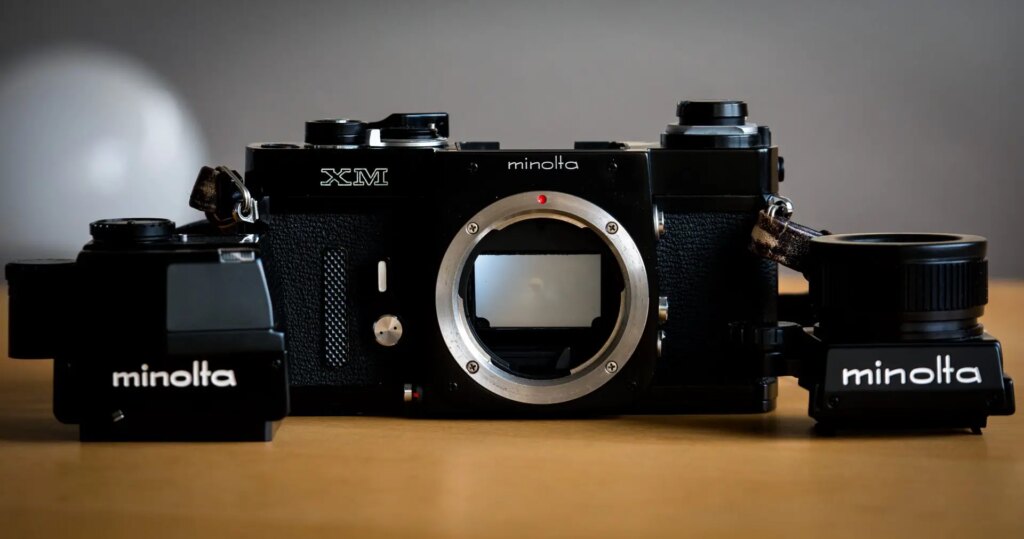
In practice, shooting with the Nikon and Minolta is a wonderful experience. Although from the same generation, one notices the different concepts the engineers had in mind. The F2, as the successor to the F, has been thoroughly but carefully modernized. The users, mainly in the professional news environment, did not want to be subjected to unfamiliar innovations. Who would want to give up their well-practiced technique to use an automatic timer? In the early 1970s, with extensive newspaper coverage of wartime conflicts, a camera had to function reliably in all climates. The F2 fulfilled this requirement in a unique way.
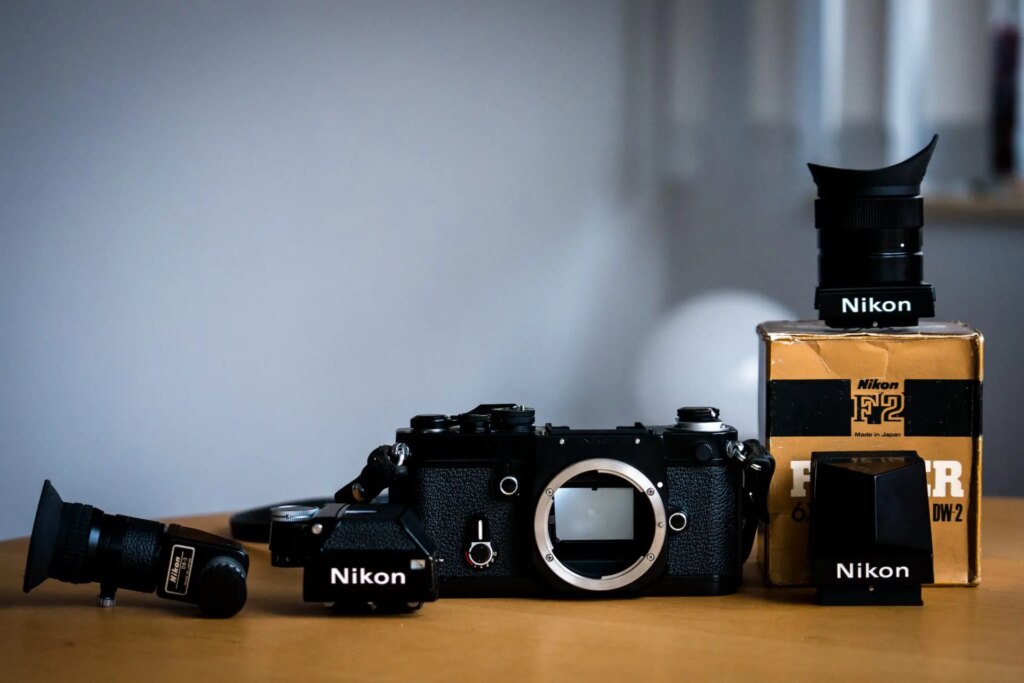
The Minolta did not copy the F2, which was the best available in the professional sector. Rather, the Minolta XM was a counter design to the Nikon. Innovative, at times unusual in handling, and robust, and with a high economic risk for Minolta. The Achilles heel of such a concept, the professionals saw in the electronics. Quite wrongly, as we know today. The XM can be called the mother of all professional SLR cameras. It has everything that is important for professional use. Except for one thing: There is no motor that the XM can connect.
One thing is for sure, the developers didn’t simply forget the connection. Minolta’s extreme demand for quality probably stood in the way. In 1972, the XM motor already existed, only the chemical-physical structure of the CdS photocells was not sufficient for fast motorized film transport. That’s why the prototype XM motor presented at Photokina 1972 disappeared into oblivion. Only with the AE silicon viewfinder was it possible to use a motorized transport with an automatically controlled exposure. And it wasn’t until 1976 that this integrated electronics made it possible to use silicon photocells. In that year, the XM motor was introduced to the market. Incidentally, it was also the first silicon cell viewfinder for F2.
The concept of the integrated electronic transport motor was not new. It was first realized in the SR-M. But in the Minolta XM it was used for the first time in a professional camera. this concept became the standard until it was superseded by the advent of the digital camera.
There cannot be a winner in the comparison. Both can be used (almost) perfectly.
Ultimately, the Minolta XM and Nikon F2 tell the story of the competition between two major brands for the best professional camera concept. It is curious that Minolta, as the loser of this competition, realized many forward-looking ideas. These were then realized by Nikon in the successor to the F2, the F3. But that is another story.
Share this post:
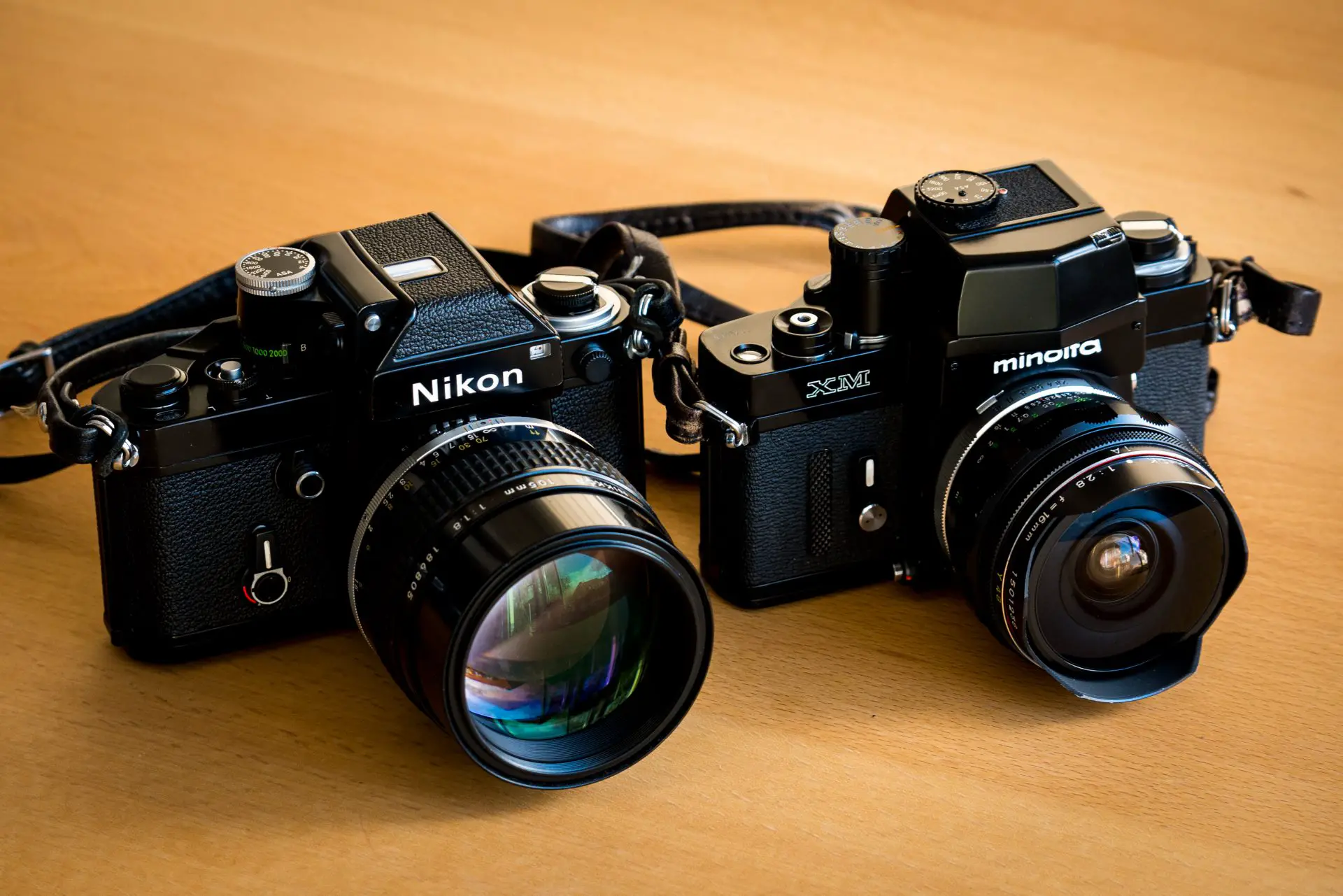








Comments
Andrew B on Minolta XM Compared to the Nikon F2 – Between Myth and Market – By Alex Peter
Comment posted: 13/02/2023
Kurt Ingham on Minolta XM Compared to the Nikon F2 – Between Myth and Market – By Alex Peter
Comment posted: 14/02/2023
now among of my favorite 35mm SLRs.
In 'the day' it was nothing but Nikon and Nikkormat (for 35). Now I never touch one- thousands of frames have eliminated any novelty from the experience, and I don't have to worry about making a living with it.
Bob Janes on Minolta XM Compared to the Nikon F2 – Between Myth and Market – By Alex Peter
Comment posted: 14/02/2023
The XM seems like another example of Minolta preferring function to form - It could be seen as a quite 'aesthetically challenging' camera - a bit Frankensrien's monster. In a similar vein the SRT cameras were a bit gawky and Minolta went on to produce some other 'unusual' looking cameras (the 9xi and 800si spring to mind)...
...lovely cameras though.
Ted Ayre on Minolta XM Compared to the Nikon F2 – Between Myth and Market – By Alex Peter
Comment posted: 14/02/2023
Ibraar Hussain on Minolta XM Compared to the Nikon F2 – Between Myth and Market – By Alex Peter
Comment posted: 14/02/2023
Both legendary!
I’ve had my eye on the Minolta for a long time but can’t justify it as have a Contax RTS II which I think is a Great camera and one which I am so familiar with.
Huss on Minolta XM Compared to the Nikon F2 – Between Myth and Market – By Alex Peter
Comment posted: 14/02/2023
I find the exposure compensation lever on the Minolta very awkward to use, but the upside is the moment you let it go, it reverts back to zero. If you use the exp compensation on the ISO dial, there is no reminder in the vf that you have it set which can be a problem if you forget to set it back.
I had both meter heads for the XK - the AE and the later improved AE-S. I sold the AE-S as I much preferred the meter readout in the original AE head. The LEDs in the AE-S were impossible to see in sunshine, and would blind you at night! Plus you had to flip a switch to see the top or bottom set of shutter speeds .
The Minolta has a very cool, pre-matrix metering CLC (contrast light compensation) design which works remarkably well. The Nikon has a very good heavily center weighted 60/40 pattern.
The meter had to be repaired on my F2AS, as all these Nikons use a resistor ring which wears out. Sover Wong did the deed. Now with that repaired it feel more dependable than the Minolta, as the rest of the camera is mechanical. My XK if left to sit for a while is starting to exhibit electrical gremlins. Occasionally the shutter will fire at a very different speed than expected.
Anyway... thanks for this fun article!
tbm3fan on Minolta XM Compared to the Nikon F2 – Between Myth and Market – By Alex Peter
Comment posted: 15/02/2023
Tim Gasper on Minolta XM Compared to the Nikon F2 – Between Myth and Market – By Alex Peter
Comment posted: 13/03/2023